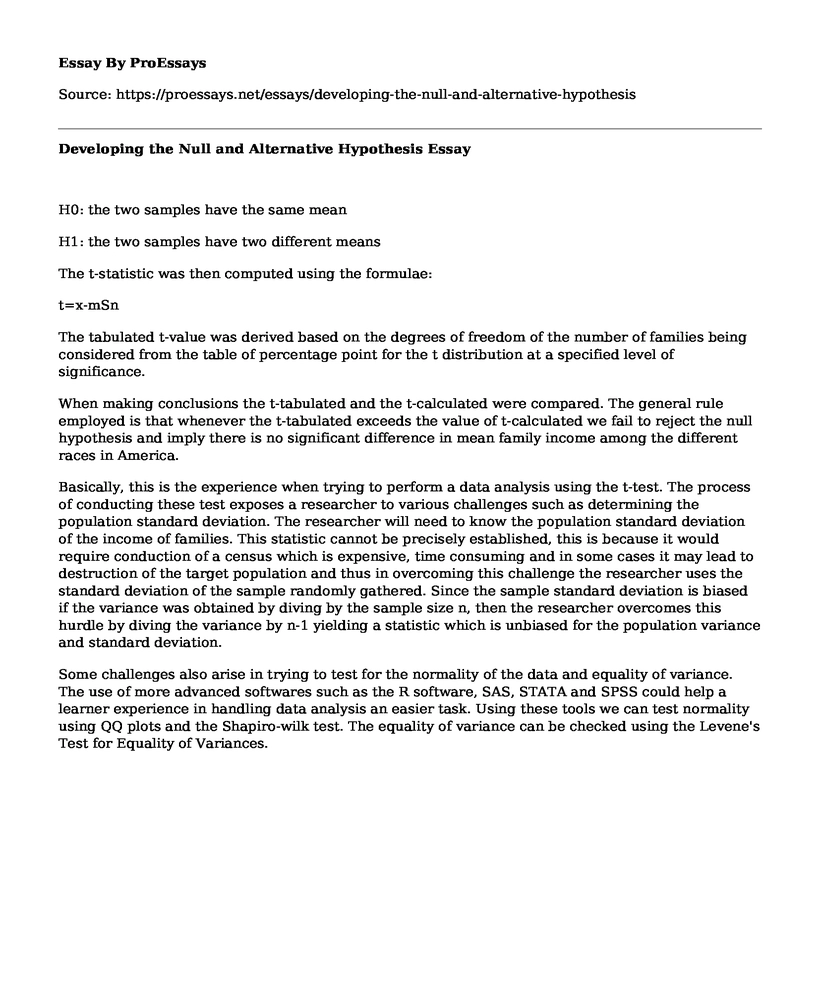H0: the two samples have the same mean
H1: the two samples have two different means
The t-statistic was then computed using the formulae:
t=x-mSn
The tabulated t-value was derived based on the degrees of freedom of the number of families being considered from the table of percentage point for the t distribution at a specified level of significance.
When making conclusions the t-tabulated and the t-calculated were compared. The general rule employed is that whenever the t-tabulated exceeds the value of t-calculated we fail to reject the null hypothesis and imply there is no significant difference in mean family income among the different races in America.
Basically, this is the experience when trying to perform a data analysis using the t-test. The process of conducting these test exposes a researcher to various challenges such as determining the population standard deviation. The researcher will need to know the population standard deviation of the income of families. This statistic cannot be precisely established, this is because it would require conduction of a census which is expensive, time consuming and in some cases it may lead to destruction of the target population and thus in overcoming this challenge the researcher uses the standard deviation of the sample randomly gathered. Since the sample standard deviation is biased if the variance was obtained by diving by the sample size n, then the researcher overcomes this hurdle by diving the variance by n-1 yielding a statistic which is unbiased for the population variance and standard deviation.
Some challenges also arise in trying to test for the normality of the data and equality of variance. The use of more advanced softwares such as the R software, SAS, STATA and SPSS could help a learner experience in handling data analysis an easier task. Using these tools we can test normality using QQ plots and the Shapiro-wilk test. The equality of variance can be checked using the Levene's Test for Equality of Variances.
Cite this page
Developing the Null and Alternative Hypothesis. (2021, Mar 03). Retrieved from https://proessays.net/essays/developing-the-null-and-alternative-hypothesis
If you are the original author of this essay and no longer wish to have it published on the ProEssays website, please click below to request its removal:
- Translation Studies and Theories
- Essay Sample on Student Truancy
- "Second Language Education" Teaching Philosophy Essay
- Self-Efficacy Beliefs Among Teachers in the Teaching Profession Paper Example
- Essay on Young Dreamer's Mission to Become a Doctor: A Journey of Dedication, Empathy, and Curiosity
- Essay Sample on Differences Between Conceptual and A Theoretical Framework
- Essay Exampe on Bullying Among Children: Power and Social Status Dynamics







